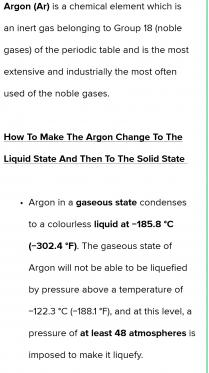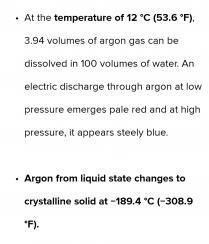Argon in a gaseous state condenses to a colourless liquid at −185.8 °C (−302.4 °F). The gaseous state of Argon will not be able to be liquefied by pressure above a temperature of −122.3 °C (−188.1 °F), and at this level, a pressure of at least 48 atmospheres is imposed to make it liquefy.

